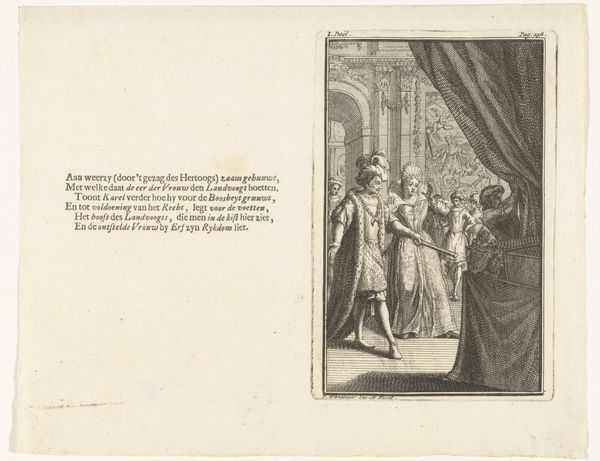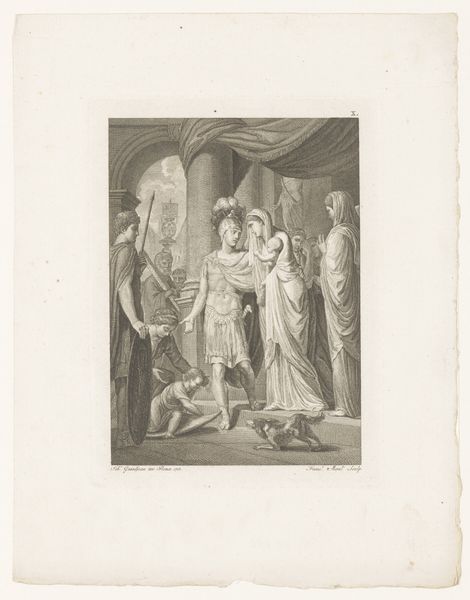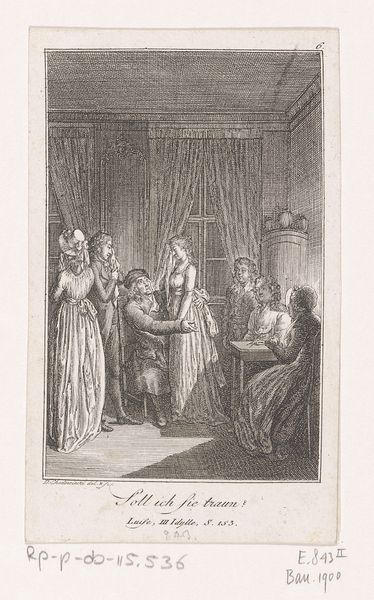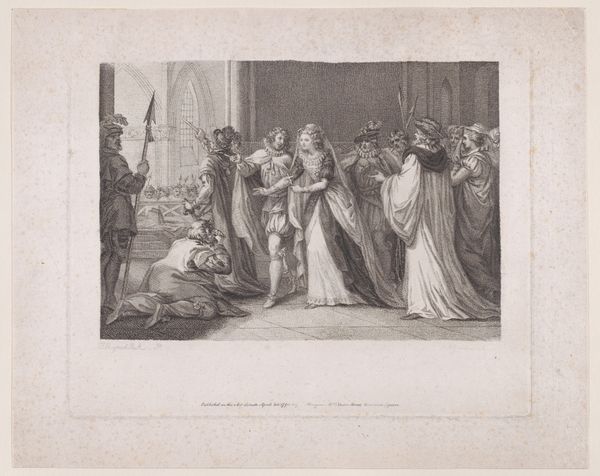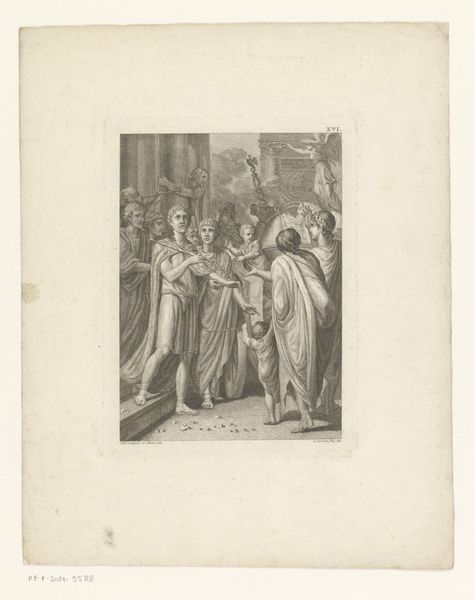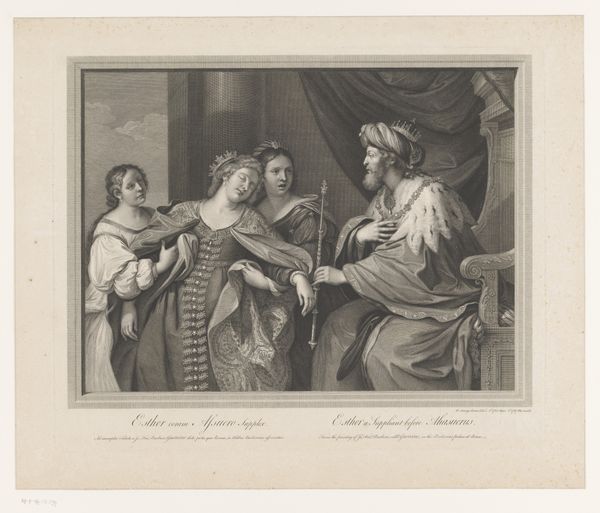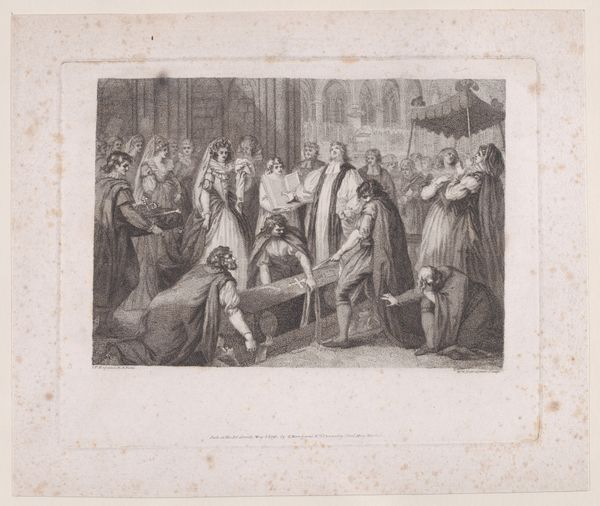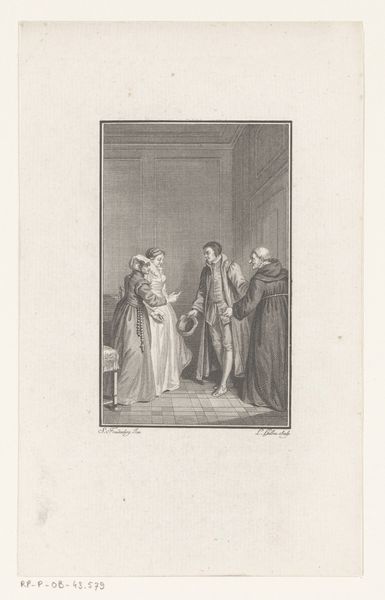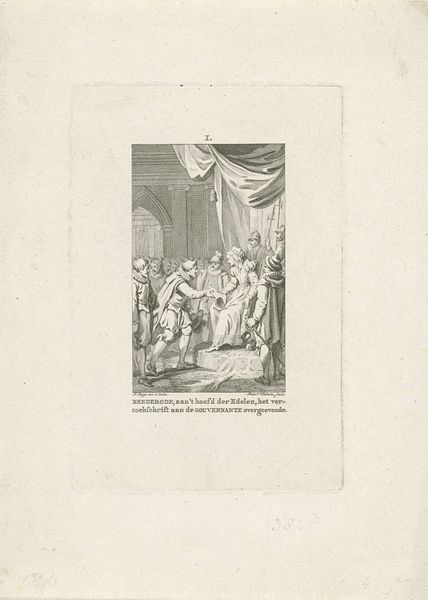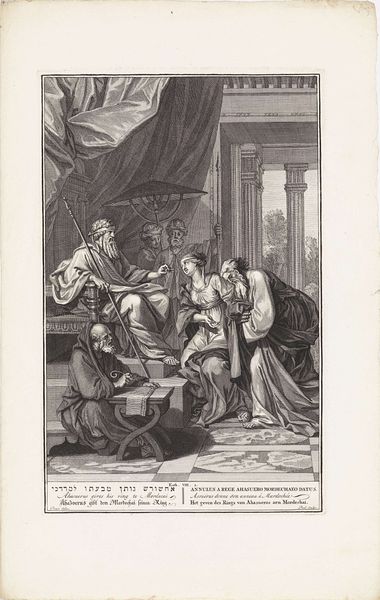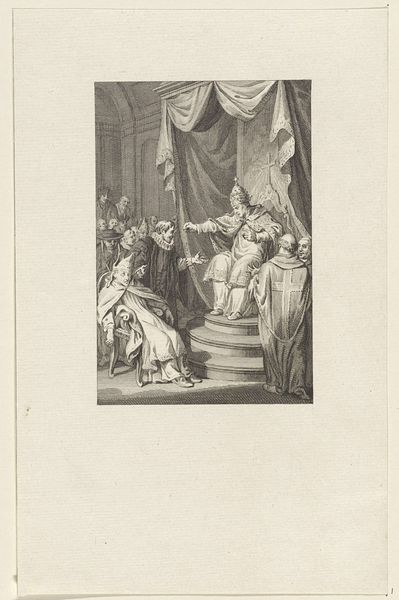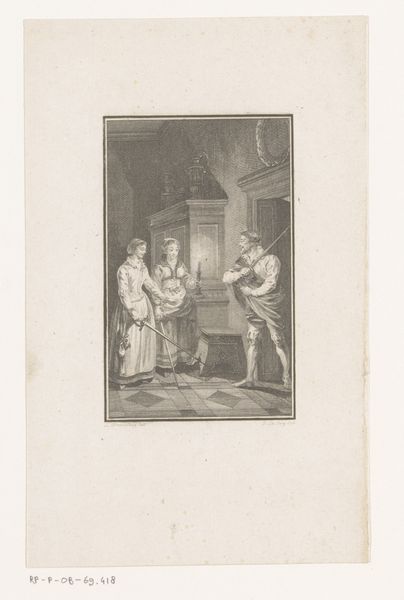
print, etching, engraving
#
narrative-art
#
baroque
# print
#
etching
#
figuration
#
pen-ink sketch
#
history-painting
#
engraving
Dimensions: height 254 mm, width 294 mm
Copyright: Rijks Museum: Open Domain
Editor: This is Cesare Fantetti’s "Jozef verklaart de dromen van de farao," or "Joseph Interprets the Dreams of the Pharaoh," from 1675, rendered in etching and engraving. It feels like a pivotal moment, full of dramatic tension. How do you interpret this work? Curator: Well, consider the narrative. Fantetti places this scene, depicting a Jewish man advising an Egyptian ruler, within the context of religious and political power. The very act of representing this scene during the Baroque period asks us to consider intercultural exchanges, specifically how marginalized voices can rise to positions of influence, even if temporarily. What do you make of the composition itself? Editor: It’s interesting how Joseph is centered but almost separated from the Pharaoh by his gestures, creating opposing groups. Is Fantetti saying something about social hierarchies here? Curator: Precisely. Look at who's doing the interpreting and who needs the interpretation. Fantetti uses Joseph, a figure who was once enslaved and imprisoned, to show how societal power dynamics can shift, albeit within strict, divinely sanctioned boundaries. Does this shift change how you see the piece? Editor: Absolutely. The contrast between Joseph's insightful knowledge and the Pharaoh's dependence highlights the value of those on the periphery. Thanks, I appreciate your insights. Curator: Indeed, it speaks volumes about who gets to interpret history and for what purpose, even centuries later. Thanks for exploring it with me.
Comments
No comments
Be the first to comment and join the conversation on the ultimate creative platform.
